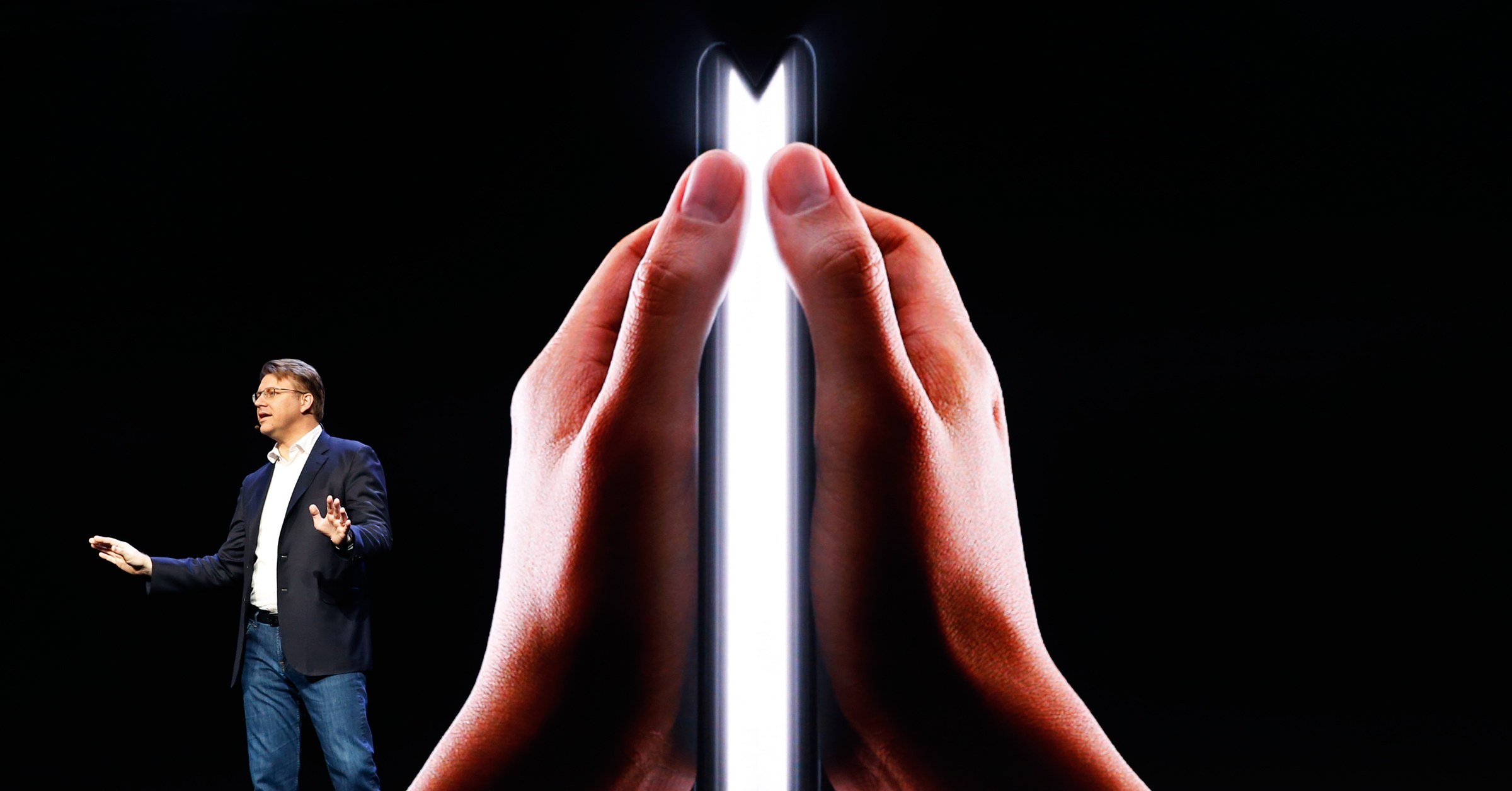
At a developer event, Samsung showed off a smartphone with a folding screen for mobile computing. (Credit: Stephen Lam/REUTERS)
Foldable Phone Concept Proposed at Developers Conference
From the pocket-sized devices of the past to large surrogate laptops for work on the go, phones are multi-purpose, from pseudo TVs for watching Netflix on planes to tiny devices for editing writing, photos and graphics. Samsung, the company that pioneered the “phablet,” now proposes a newer, bigger phone that unfolds like a book to reveal a second, larger screen inside.
Samsung showed off its future-phone concept under dimmed lights at its annual developers conference in San Francisco. The phone offers a 7.3-inch flexible display for reading, watching television, or multi-tasking with multiple apps.
“When it’s open, it’s a tablet offering a big-screen experience,” said Justin Denison, Samsung’s SVP of mobile product marketing. “When closed, it’s a phone that fits neatly inside your pocket.”
For now, it’s still just a concept. Samsung declined to share a name for the product or a timeline for its release, and Denison quickly tucked the device back into his pocket after giving attendees a 20-second glance. But unlike Samsung’s earlier attempts to make a bendable phone, this one seems to be achievable. Google announced today that Android will officially support bending screen designs, promising to create a “seamless” mobile experience for this and future devices that fall into the new category of “foldables.”
For years, Samsung has pushed display technology to the edge, curving displays, shrinking bezels, and squishing pixels. Also, it proved people would buy a phone too large to hold with one hand, and changed the course of smartphone design for years to come. It is seeking to do that again with a bending phone.
Samsung has been trying to pull off a flexible phone since at least 2011, when it first showed off a dual-screen handset with a creaseless display. The pitch, both then and now, was a phone with more real estate to do the things a modern phone should do: watch television, chat with video, multitask between several apps. Two screens instead of one makes your phone even more of a pocketable computer.
read more at wired.com







Leave A Comment